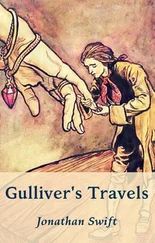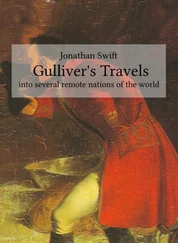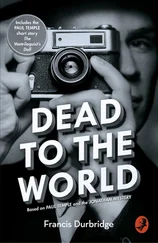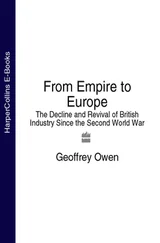Nor should this work be expected to be prophetic. It emphasizes a lost momentum for the Western world, its weakening, but does not predict its collapse. Yes, democracy is in bad shape. In fact, there has been an endless stream of warnings. In 1974, the German Chancellor Willy Brandt famously remarked: “Western Europe has only twenty or thirty more years of democracy left in it; after that it will slide, engineless and rudderless, under the surrounding sea of dictatorship.” 18One cannot deny the feeling that Western politics is on a slippery slope, that the rota fortunae now inevitably shrieks toward distress and uncertainty. One cannot disagree with the assessment that dignity retreats from the assemblies, that big business is tremendously influential, and that policy is frequently about sterile economics instead of the deeper chords of identity and pride that form a nation. 19Yet, in many countries democracy remained resilient and all around the world activists shed their blood for political liberty. For all the dynamism, authoritarian states also remain fragile and often lack the freedom that is so crucial for innovation. 20I can thus not conclude at this stage whether Western liberalism will die, whether the Western world will be eclipsed by the authoritarian countries, as Brandt suggested. Thirty years is a wavelet in history, a few books in a long line of library shelves. I do not even think our times were so exceptional; they were different. All I can conclude is that the West has lost a golden opportunity to grow stronger, that it has saddled the next generations with formidable challenges, that the world became more divided, and that other powers can take advantage of it.
So, the reader should not expect this book to be a long opinion article with a single idea and everything organized accordingly. It consists of different themes that are studied throughout the chapters, themes that are inseparable. It is mostly chronological. The chronological approach sometimes leads to repetition. The reader will, for example, discover that the incapacity of the West to deal with the growing instability of the South comes back in different periods. They will also find that while some warnings were already audible in the late 1980s – about the impact of social inequality on the resilience of Western society, for instance, or the consequences of underinvestment for economic power – politicians were still seen to be incapable of addressing these issues in the 1990s and the subsequent two decades.
This repetition, the recurrence of a problem and statements of concern, helps the reader understand themes like the limits of learning or the decadence trap. Oftentimes, we did have the scientific reports about the challenges and we even had clues about solutions, yet were too slow to react. We knew that consumerism and the sorry state of citizenship were rendering Western society vulnerable in a competitive world. Books were written about the matter and important leaders signaled their worry, decade after decade. Yet, to make a rich society change track, so it would appear, is like trying to change the course of a mammoth tanker whose rudder is broken. If there is repetition in this book, let it be an affirmation of inertia.
The account takes the reader back and forth between different viewpoints. The book approaches world politics from the viewpoint of the West, roughly defined as North America and Europe, but also looks at the West from the perspective of other parts of the world. This is required to understand how tensions built up, how common challenges, like financial instability, were approached with different interests in mind. The book takes an interest in the internal causes of the difficulties of the West, but also in its foreign policy, the way Western experts evaluated its effectiveness, and the way non-Western voices commented on it. The reader will be introduced to Western assessments of world security, but also to Russian, Chinese, Indian, and various African interpretations. Hence, this project draws from multiple sources. It builds on various previous studies, but also reviews policy documents, integrates insights from personal conversations, and includes figures from multiple databases. The merit of the book lies thus not so much in sensational revelations, but in bringing information from many sources together, combining viewpoints, and connecting aspects of world politics that are often treated separately: connecting the dots.
The result is a broad canvas of events and personalities, connected through different themes. This approach is somewhat at loggerheads with today’s more common approach of looking at history through the lens of small events or personalities. In those cases, one can look at history as through a drop of water: through something very tiny, one obtains an all-around panorama. This is indeed a very enchanting way of writing, allowing readers to identify themselves with personalities or to be offered salient anecdotes, to smell and feel history. Yet, sometimes, it is also important to look at the world as it is: a murky and vast complex of intrigues, partnerships, and conflicts.
This book will therefore be less an elegant miniature and more a panorama that invites the reader on certain occasions to study facets in detail and then again to take a few steps back to see the bigger picture, to gaze through one perspective and then to take another viewpoint. It is a more demanding approach, less straightforward perhaps, but an approach that encourages the reader to master the complexity that is inherent to world politics. It will not be easy to read this work leisurely. Pages are rather packed with information and sometimes one will have to turn back to keep seeing the plot. While this book certainly has flaws, it needs to be read with this purpose in mind.
The book consists of 12 chapters. A very short first chapter documents the move of the pendulum with data. It became fashionable for optimistic intellectuals to display charts that had only one destination: up. Optimism is a moral duty, it was said. There was indeed reason to be optimistic. The chapter shows growth in production and trade, a decrease also of extreme poverty. Yet, it recommends prudence and seeing these positive trends next to more worrying developments.
How was the transition from the Cold War to a new age perceived? What was the mood in the world at this dramatic moment of change around 1990? These are the central questions in chapters 2and 3. The second chapter explains that the fall of the Soviet Union was not a victory of the West. Yes, the West became uncontested in terms of power. And, yes, one famous essay proclaimed the end of history. Yet, that same essay also warned that the end of history would be an unhappy time and make many in the West long for identity. The end of the Cold War triggered a moment of introspection.
The third chapter takes an alternative viewpoint. It looks at the world from the perspective of other societies. Russia, for instance, was still tottering between the old certainty of Soviet nationalism and the new uncertainty of democracy. In China, reformism was balanced by a commitment to fight Westernization, to keep control over the economy, and to contest American dominance. In the Middle East, the main experiment of democracy, Turkey, struggled, while the authoritarian countries showed no interest in liberalization. In the Global South, prominent thinkers were critical of Western liberalism. Hence, the turning point around 1990 was a defeat of Soviet communism, but certainly not yet a victory of Western liberalism. Chapters 2and 3form the overture and set the scene.
The next three chapters survey world politics between the end of the Cold War and the turn of the century. This is, so to say, the first act. Chapter 4explains how the liberalism advocated by the West became a façade. It became a façade because the pledges of Western leaders to strike a balance between openness and protection, the Third Way, as it was called, were not matched by their deeds. In the United States, President Bill Clinton promised to create a more humane economy, but inequality exploded. While American society became more dependent on imported goods, distributed by megamalls like Walmart, the government started to sell massive amounts of debt overseas. In the European Union, integration advanced, but citizens were hesitant. While rightist nationalism was quarantined, the gains of the open market were not clear to all citizens. Similar contradictions, chapter 5explains, were visible in security policy. While the West pretended to stand for the promotion of democracy, it opted for remote-control bombings with limited ambition to help create the conditions for lasting democracy on the ground.
Читать дальше
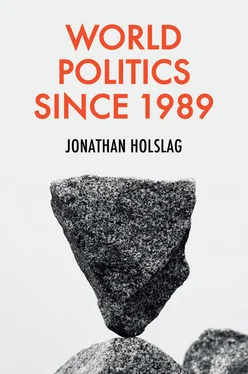
![Деннис Лихэйн - Когда под ногами бездна [Since We Fell ru]](/books/25722/dennis-lihejn-kogda-pod-nogami-bezdna-since-we-fe-thumb.webp)





